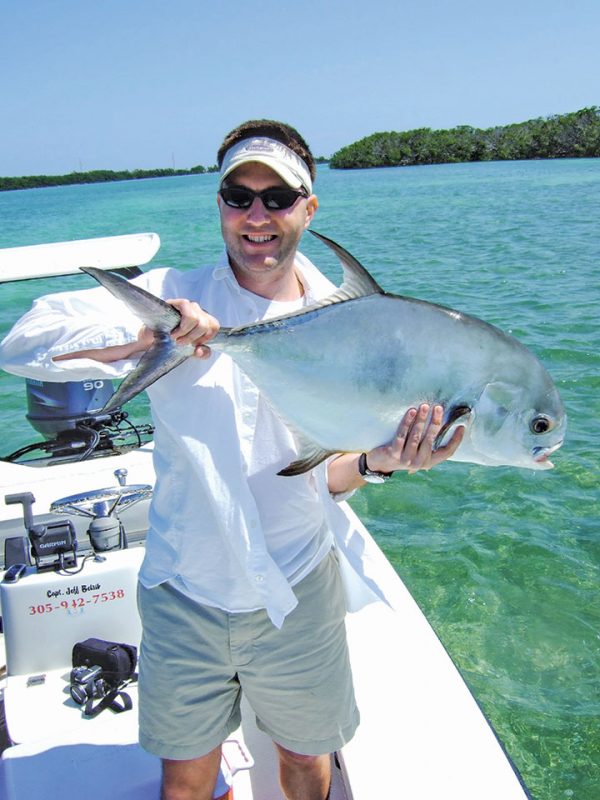Photo of Capt. Matt Johnson (Native FinCharters) by Tom Purves/flickr
Bonefish & Tarpon Trust’s Project Permit has reached a major milestone of 150 permit tagged with acoustic transmitters in south Florida since March 2016.
Scientists track the movement patterns of tagged fish for up to five years, providing important information on habitat use and spawning locations. This information is essential to guide permit conservation efforts, and data from Project Permit have already influenced permit harvest regulations, such as the expansion of the permit harvest season closure in the Special Permit Zone (SPZ) to include the month of April.
Last week BTT Collaborating Scientist Dr. Jake Brownscombe tagged 14 permit on the flats of Biscayne Bay with fishing guides Capt. Augie Moss and Capt. Carl Ball. Project Permit would not be possible without the help of the dozens of fishing guides who generously donate time and expertise to catch and tag fish with BTT scientists.
Currently BTT is also seeking information on juvenile permit to gain a better understanding of the habitats that support the juveniles and sub-adults.
For permit in the Keys, abundant newborns form 1 to 3 inches can be found on sandy beaches. Adults and larger sub-adults greater than 15 inches live on the flats or reefs and wrecks. However, fish between 4 and 14 inches are surprisingly rare.
These 4- to 14-inch fish might be absent because the habitats they use are becoming degraded, and as a result, there are less of that size. Or, scientists haven’t yet looked in the right places for them. In either case, BTT seeks to identify the habitats these fish are using to restore them if they are unhealthy, or protect them so permit have a place to grow into adults.
Report sightings and catches of permit in the 4- to 14-inch range to Florida Keys Initiative Manager Dr. Ross Boucek. Email Dr. Boucek at ross@bonefishtarpontrust.org.
